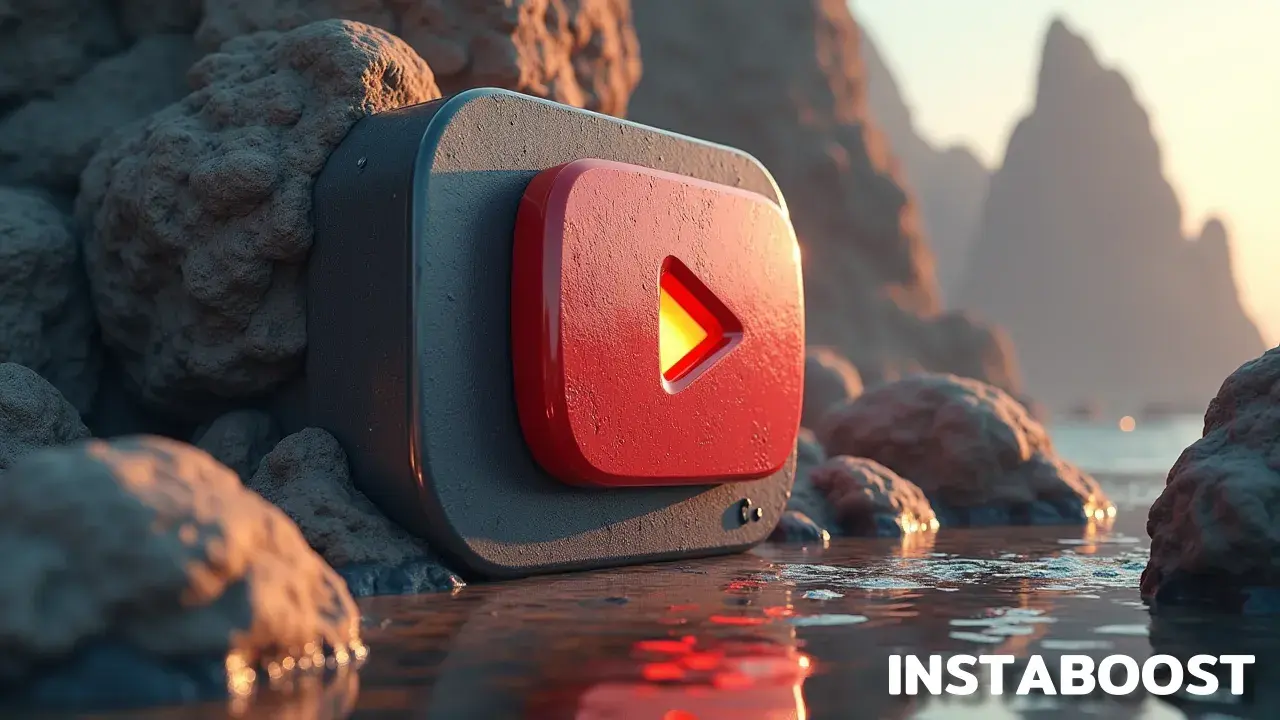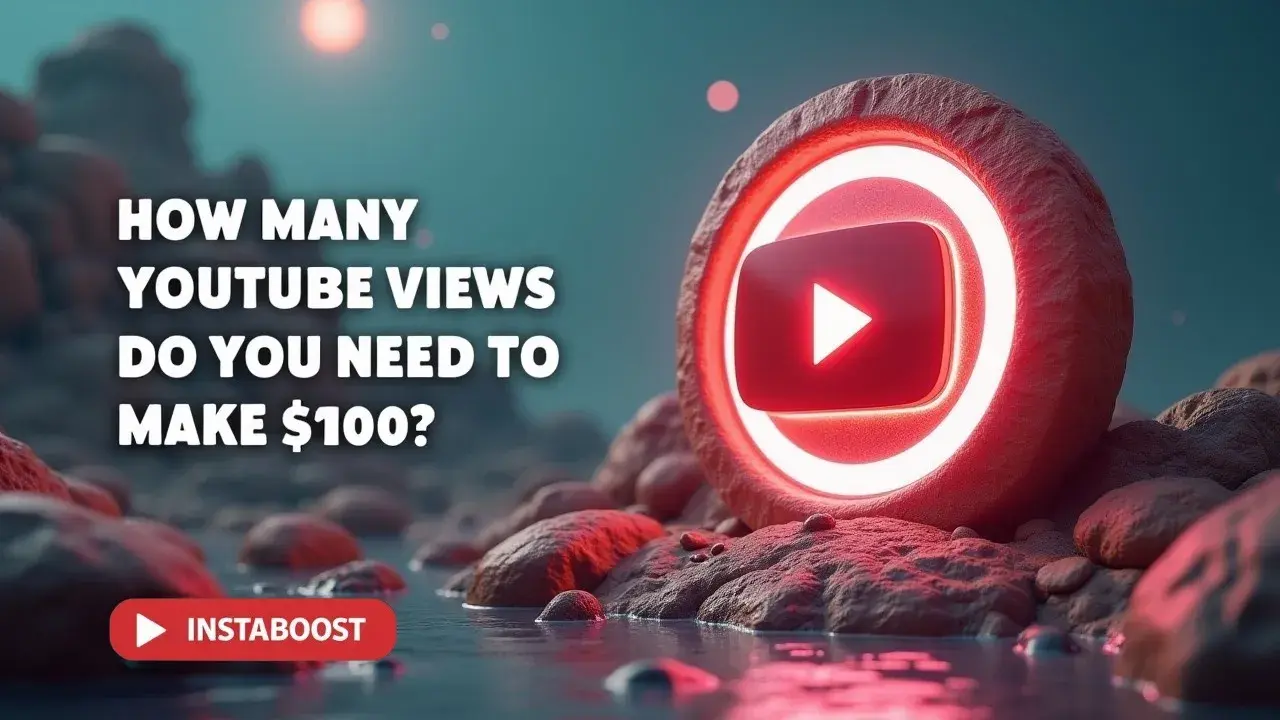How Many YouTube Views Are Needed to Make $100?
Earning $100 on YouTube typically aligns with view quality and watch time, not raw volume alone. More qualified views and stronger retention improve monetization efficiency, especially when one consistent format keeps attention and uploads follow a reliable cadence. Tracking first-hour spikes and longer session drivers helps identify what turns traction into sustained growth. Focus on attention-holding content and steady iteration to reach the mark faster and repeatably.
The $100 Question, Answered with Context
If you’re asking how many YouTube views it takes to make $100, you’re really asking about RPM – revenue per thousand views – and how your videos trigger it. The quick math stays simple: many channels see $1 – $5 RPM from AdSense on long-form videos, which puts a $100 target between about 20,000 and 100,000 monetized views. That range tightens when your topic, audience geography, and format match advertiser demand and your retention signals are strong. Finance, software, and niche B2B tutorials often pull higher CPMs. Broader entertainment can earn less unless it drives strong watch time and session growth.
Shorts usually pay less per view, but when they bring subscribers into your long-form library, the blended result can work in your favor. The practical path is stacking levers that compound – hold attention past 50%, earn genuine comments that signal satisfaction, and pair uploads with targeted promotion that brings in qualified viewers instead of empty spikes; tactics like smart keywording and measured experimentation can also help you optimize YouTube marketing without distorting your content strategy. If you run paid boosts or creator collabs, treat them as tests. Use clean analytics, unique links, and time-bound windows so you see what actually lifts RPM rather than just views.
A simple benchmark helps: if a video earns a $3 RPM, around 34,000 views clears $100. Raise average view duration and niche relevance and that same video can cross the mark at roughly 18 – 25k. You’re not chasing “viral” as a lottery ticket. You’re engineering early momentum with solid first-hour CTR and retention, then iterating the format that repeats it. With one reliable template, a consistent schedule, and thumbnails that set expectations honestly, the road to your first $100 becomes a process you can measure and improve, not a mystery.

Proving Ground: What Separates $100 Earners from Everyone Else
It took me longer than I’d like to admit to see the pattern. The channels that reliably hit $100 aren’t just chasing views; they’re creating qualified watch time that advertisers actually want. That sounds fancier than it is. When your topic matches buyer intent – tutorials, reviews, finance, B2B tools, or niche hobbies with gear – RPM climbs, and the views-to-$100 math shrinks. Intent alone isn’t the lever, though.
You still need strong retention through the first 30 – 60 seconds, clean mid-roll placement on 8 – 12 minute videos, and real comments that signal relevance so YouTube keeps testing you with adjacent audiences. A simple loop works: publish on a steady cadence, track audience geography and playback locations in Analytics, and trim dead air to lift average view duration, while remembering that shortcuts like order YouTube subscribers now can muddy attribution and weaken the very signals you’re trying to strengthen. Then layer in targeted promotion from reputable, well-matched sources – creator collabs, newsletter swaps, or a small, well-aimed ad test – to spark early momentum without muddying your data.
The smart play isn’t a viral spike. It’s a repeatable first-hour pattern: a measurable click-through rate from a clear thumbnail, steady watch time through your first value beat, and a session extension with a tight end screen to a related video. That trifecta lifts RPM because higher-intent viewers see higher-paying ads more often. If you’re optimizing for how many YouTube views you need to make $100, prioritize watch time quality over raw volume, keep analytics clean so you can see what actually moved RPM, and tune format for advertiser fit. Do that, and the 20,000 – 100,000 view range narrows fast, often by half.
Turn Qualified Watch Time into Predictable Payouts
You don’t need trends. You need traction. Treat the $100 target like a systems game and engineer videos that reliably drive qualified watch time so your RPM tightens and the views required to reach $100 on YouTube go down. Start with topics that show buyer intent and earn higher CPMs – how-tos tied to tools, honest product reviews, finance explainers, or niche hobbies with real gear.
Then design for retention signals: quick setup, early proof, clear chapters, pattern interrupts every 20 – 40 seconds, and a single, crisp promise in the title and thumbnail that you actually deliver. Run a clean testing loop. A/B test thumbnails, watch the first 30 seconds’ absolute retention in analytics, and map drop-offs to on-screen beats you can fix in the next upload. Early momentum matters, so seed first-hour velocity with targeted promotion in places matched to intent – subreddit threads, Discords, newsletters – or use small, reputable ad boosts when your hook and watch time already score, and if you reference tools you’ve vetted, keep them to known utilities such as YouTube like service that works only when they support already-qualified traffic.
Paid traffic works when it’s qualified and aligned, and fails when it’s cheap or mismatched, which can tank RPM and confuse the algorithm. Build real comments with explicit prompts that invite specifics, like which tool they would replace, and mine those replies to script the next video so sessions run longer across your channel. Collaborate with creators tied to the same purchase journey, not just similar demographics, and trade assets like end-screen swaps, pinned comments, or a joint tutorial that links stacks of related videos. Keep analytics clean. Separate Shorts from long-form when reviewing revenue, track RPM by topic cluster and geography, and trim dead weight from playlists that stall sessions. The non-obvious insight is simple: one dependable format that compounds retention across a tight topic cluster beats five viral one-offs and gets you to $100 with fewer, more valuable views.
The Hidden Tax on “Viral”
People say going viral works, and it can, but the part they skip is how it can misfire. A big spike can pull in the wrong crowd, tank your RPM, and slow the road to the first $100 on YouTube. When a general-interest short drives untargeted traffic, your next focused upload gets served to that mixed audience. Retention drops, and the algorithm protects viewers by dialing back distribution.
That’s the hidden tax: you pay for off-topic reach with lower qualified watch time and a weaker advertiser match. The fix isn’t to avoid virality. It’s to contain it. If you chase a breakout, keep it inside your buyer-intent lane – tutorials, reviews, finance, B2B, or niche gear – so new viewers are aligned. Pair spikes with safeguards. Use a pinned comment and end screen to route people to a higher RPM video.
Add clean chapters so skimmers stay. Set a crisp title and thumbnail promise you actually fulfill. Layer in targeted promotion only with reputable audiences – your email list, a niche subreddit ad, or collabs with creators your buyers already watch – so the algorithm reads coherence, not chaos. Keep your analytics clean. Segment traffic by intent, like search, suggested from your own library, and external from qualified sources, and watch CTR and average view duration by segment. If a surge hurts retention on core videos, prune with unlisted shorts or adjust upload timing to reset your baseline.
Early momentum matters – strong first-hour spikes and watch time signal quality – but it’s momentum with the right viewers that lifts RPM and shrinks the views needed to reach $100, not attempts to jumpstart your video performance with generic traffic. Growth works best when every lever adds buyers, not bystanders.















